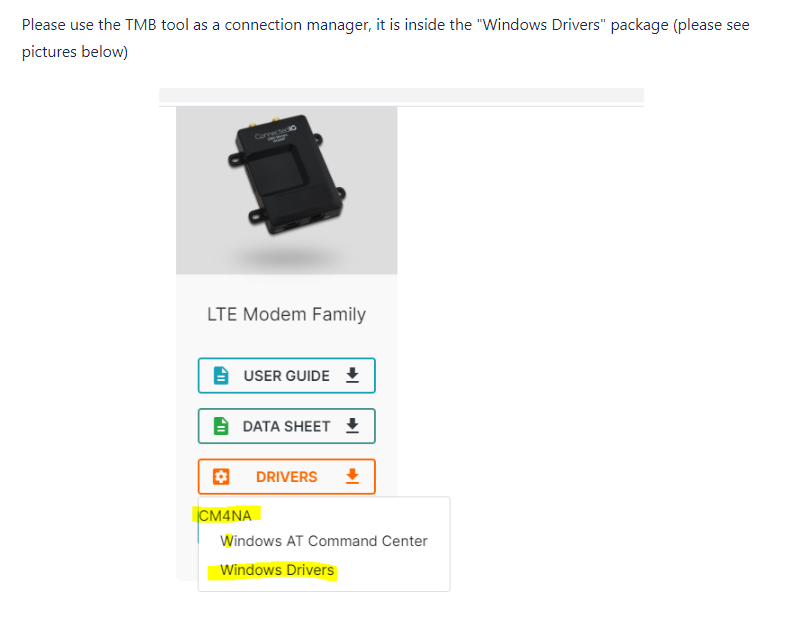Unlike a router, which is a standalone device, a modem is a peripheral and depends upon a host. Connected IO Modems support Windows and Linux hosts. Each needs a driver to know how to communicate with the modem.
Setting up a modem consists of three simple steps:
1. First, install the proper driver on your host computer.
https://connectedio.com/support?q=2


2. Then connect the modem and power it up.

3. Lastly, activate the modem and tell it where to 'communicate'
To connect, use the USB cable, as desired, and plug in the modem until the Power LED illuminates.
To configure the driver, follow the next step to make some additional changes for driver signature disabling:
4. Additional changes for driver signature disabling:
Windows blocks Telit USB ports since Telit's drivers are not signed by Microsoft.
Please use the link below (option 2) to disable driver signature enforcement (it should be re-enabled on the next reboot):
5. Linux driver support:
To allow-hotplug and start data on raspberry do :
sudo vim /etc/network/interfaces
And add the following lines:
allow-hotplug usb0
auto usb0
iface usb0 inet manual
up path/to/StartDataCM4NA.sh
Link to Linux USB driver install user guide: Here